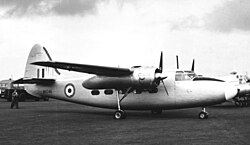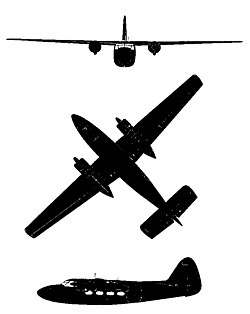| P.66 Pembroke | |
|---|---|
 Privately owned Hunting Percival P.66 Pembroke C.1 takes off in 2008 | |
| General information | |
| Type | Light transport |
| Manufacturer | Percival Aircraft Company |
| Primary user | Royal Air Force |
| Number built | 128 |
| History | |
| Manufactured | 1953–1958 |
| Introduction date | 1953 |
| First flight | 21 November 1952 |
| Retired | 1988 |
| Developed from | Percival Prince |
The Percival Pembroke is a British high-wing twin-engined light transport aircraft built by the Percival Aircraft Company, later Hunting Percival.




